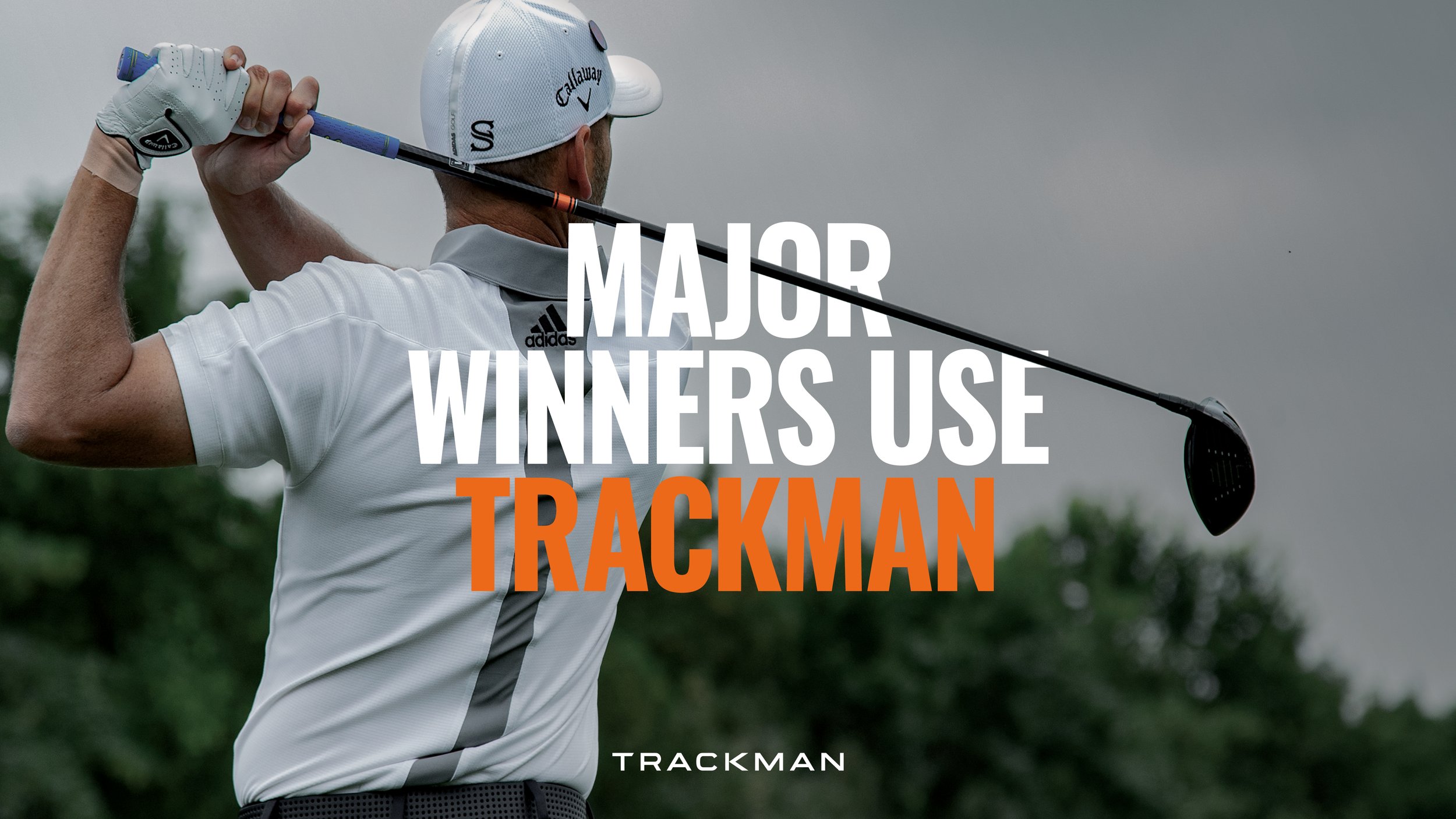
TRACKMAN
Trackman Level 2 Certified Professional
What is TrackMan?
How it works
The TrackMan radar unit tracks the trajectory of your golf ball from launch to landing. The ability to measure the full ball flight is essential to produce the highest quality data. The golf radar can pick up valuable information about your club head, giving a precise picture of the club during ball impact. With this knowledge, you can easily determine how your club face or swing path needs to be adjusted. The technology used is called doppler radar and has been widely used in military applications to track missiles and projectiles since the 1960s.
Video swing analysis
Dean can provide you with an in depth video analysis where actual club and ball flight data are merged with your swing video in real time. The combination of video and TrackMan numbers make it possible to see key element of your swing during impact, that normally would be invisible through traditional video techniques.
Keep your game in sync
TrackMan 4 is the tracking unit of choice for the top players. It combines two radars and one camera for zero doubt. That’s innovation. That’s better data. Better golf. More accuracy. And complete trust.
What are TrackMan numbers?
The TrackMan technology provides you with the most accurate feedback in the industry. The TrackMan numbers are divided into 2 main categories; ball flight data and club data. Knowing your TrackMan numbers is essential to understand and improve your golf swing. Regardless of level all golfers can benefit from using TrackMan as part of their training. Working on your golf swing and resulting ball flight through your TrackMan numbers, allows problem areas to be identified, resulting in fast improvement.
-
Face to path is the difference between the face angle and the club path. For a right-handed golfer, a negative face to path would represent a face angle that is “closed” to the path and a positive face to path would represent a face angle that is “open” to the path. A zero face to path represents a face angle and club path that have the same value.
Face to path is a key factor in determining the expected curvature (spin axis) of a golf shot. Assuming centred contact, the ball should curve towards the face angle and away from the club path (if face to path is not equal to zero).
Note that face to path is relative to the face angle and club path. It is not relative to the target line. A face to path of zero could be +5, 0, -5, or any other value relative to the target line. The zero face to path only represents the difference between where the club is moving horizontally (club path) and where the club face is pointed horizontally (face angle).
-
Swing direction is the direction the “base of the hulahoop” is pointed relative to the target lineSwing direction is the angle between the base of the hulahoop and the target line.
When a swing is referred to as “over the top”, “underneath the plane”, or “on plane”, the person is generally referring to the swing direction. Just as with swing plane, swing direction uses the three-dimensional position of the club head from approximately knee high to knee high on the downswing.
The overall motion of the club head on the downswing and post impact can be qualified to describe a person’s swing. This generalization of the swing is often the same as the measured swing direction. It is important to understand that swing direction is not the same as club path. Club path represents the motion of the club head at one point in time (impact); whereas, swing direction uses hundreds of points from the club head during the knee high to knee high portion of the downswing.
For a right-handed golfer, a negative swing direction would be regarded as “over the top”, a positive swing direction would be regarded as “underneath the plane”, and a zero swing direction would be considered “on plane” by most instructors.
-
The TrackMan technology provides you with the most accurate feedback in the industry. The TrackMan numbers are divided into 2 main categories; ball flight data and club data. Knowing your TrackMan numbers is essential to understand and improve your golf swing. Regardless of level all golfers can benefit from using TrackMan as part of their training. Working on your golf swing and resulting ball flight through your TrackMan numbers, allows problem areas to be identified, resulting in fast improvement.
-
Launch Direction is the initial direction the ball starts relative to the target line
A positive launch direction indicates a ball that starts right of the target and a negative launch direction indicates a ball that starts left of the target.
The larger the number, the more offline the ball has started (right or left). A zero launch direction means the ball started directly at the target.
Launch direction is reported in degrees and can be thought of in terms of push, pull, or straight. It is important to understand that launch direction does not describe the curvature of the shot, only its start direction.
For example, a ball with a launch direction of “-2.0 deg” will be 3.5 yards left of the target line at 100 yards and 7.0 yards left of the target line at 200 yards. Or a ball with a launch direction of -4.0 deg will be 7.0 yards left of the target line at 100 yards and 14.0 yards left of the target line at 200 yards. These examples simply use the launch direction to determine how far a ball would be offline at a certain distance. There is no curvature accounted for because curvature is not linked to launch direction.
-
Land Angle is the angle at which the ball hits the ground
Land angle is highly correlated to height and is a large determinant in the bounce and roll of a golf shot.
Assuming all else is equal, a lower (flatter) land angle will create more bounce and roll. On “normal” fairways, 1 degree of land angle will change the bounce and roll by 1.5 to 2 yards.
It is important to consider land angle when optimizing trajectory. With the driver, a lower land angle may decrease carry but increase total distance. However, on an approach shot it is important to be able to control how much bounce and roll occurs once the ball lands. A land angle greater than 45 degrees is recommended for all approach shots. Be aware that a land angle greater than 45 degrees will be very difficult to achieve with 6-iron speeds of less than 75 mph (without losing potential carry).
-
Smash Factor is ball speed divided by club speed
Smash Factor relates to the amount of energy transferred from the club head to the golf ball.
The higher the smash factor the better the energy transfer. A golfer would hope to achieve a smash factor near 1.50 on driver shots.
That means for a 100 mph club speed the ball speed would be 150 mph. The higher the loft of the club, the lower the smash factor is expected to be. A PW should have a smash factor near 1.25.
DRIVER EXAMPLE
Golfer A has a club speed of 100 mph and a smash factor of 1.40. Golfer A’s ball speed is 140 mph.
Golfer B has a club speed of 100 mph and a smash factor of 1.50. Golfer B’s ball speed is 150 mph.
The 10 mph difference in ball speed between Golfer A and Golfer B equates to approximately 20 yards in distance between the two golfers even though they have the same club speed.
-
Launch Angle is the angle the ball takes off at relative to the horizon
Launch angle is highly correlated to dynamic loft.
Launch angle will always be a little less than dynamic loft, but will have a similar value.
Along with ball speed, launch angle is a primary component to determining the height and distance of a shot.
Every golfer should be fitted to achieve the optimal balance of launch angle and spin rate based on their club speed and ball speed.
-
Face Angle is the direction the club face is pointed (right or left) at impact and is measured relative to the target line.
Most golfers refer to this as having an “open” or “closed” club face.
A positive value means the club face is pointed to the right of the target at impact (“open” for a right-handed golfer) and a negative value means the club face is pointed to the left of the target (“closed” for a right-handed golfer).
Face angle is the most important number when determining the starting direction of the golf ball. The ball will launch very closely to the direction the club face (face angle) is pointed at impact.
To hit a straight shot, the face angle should be zero. The optimal face angle depends on the type of shot the golfer wants play.
A golfer may want to hit a 5 yard fade, straight shot, or 10 yard draw. Each of these shots has its own optimal face angle.
-
The up or down movement of the club head at the time of maximum compression. Attack angle is measured relative to the horizon.
Shots hit off the ground should have a negative attack angle in order to optimize the trajectory.
However, golfers with slower club speeds should be careful not to hit too much down (negative attack angle) with their irons. This will affect the golfer’s potential distance as well as their ability to control the ball on approach shots.
To maximize distance with your driver, hitting up on the ball (positive attack angle) is a must. The driver’s loft should be chosen so that it complements the golfer’s attack angle and club speed. Having a positive attack angle does not guarantee maximum distance. The fit of the club is also an essential piece of the puzzle.
-
The vertical angle of the club face at the center-point of contact between the club and ball at the time of maximum compression
Dynamic Loft is the amount of loft on the club face at impact and is measured relative to the horizon.
The golfer’s attack angle, how the shaft bends, how the golfer releases the club head, whether the club face is open or closed to the club path, and where the ball makes contact on the club face can all affect the dynamic loft.
Creating the proper dynamic loft is important to creating the optimal trajectory and maximizing carry. Too much dynamic loft can send the ball too high into the air and reduce the golfer’s distance. Too little dynamic loft can send the ball too low making the ball roll out excessively causing it difficult to judge distance.
-
Club Speed is the speed the club head is traveling immediately prior to impact.
Club Speed determines a golfer’s potential distance.
More club speed equals more potential distance. In fact, adding 1 mph of club speed can increase your distance by up to 3 yards with the driver.
The highest recorded club speed is 156 mph! This was accomplished by Connor Powers during the Quarterfinals of the 2014 World Long Drive Championship.

